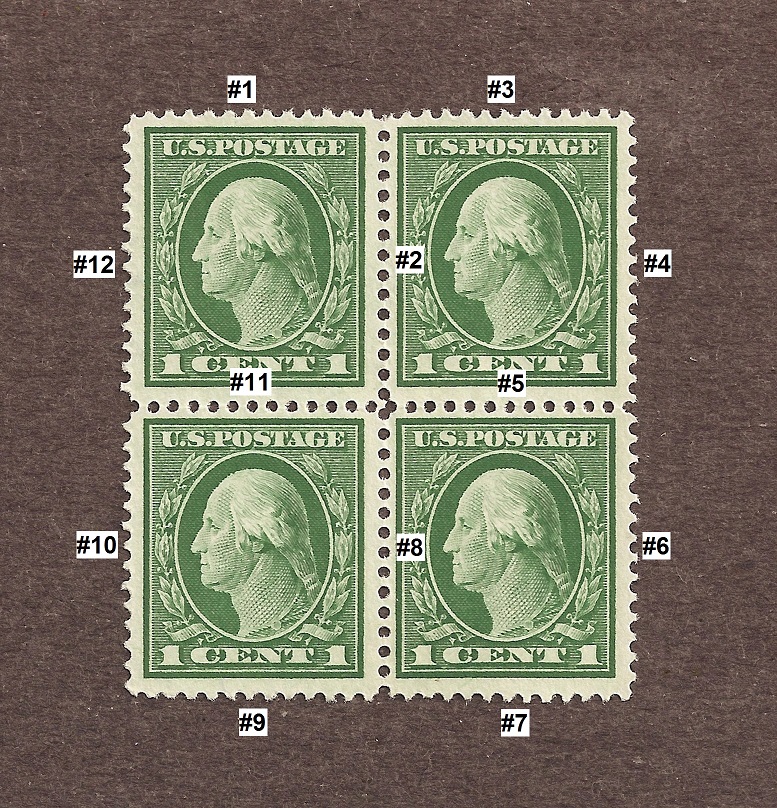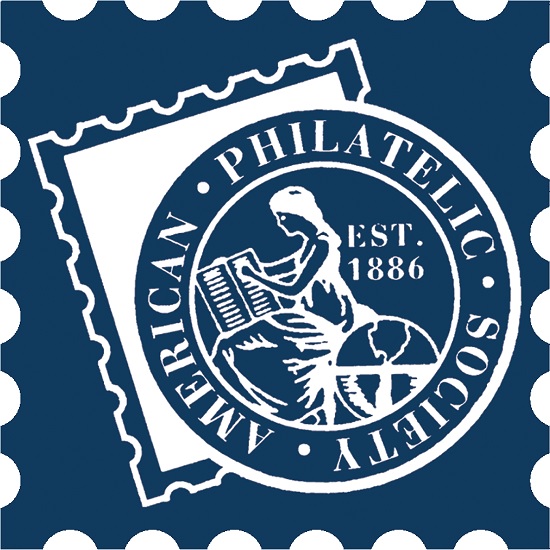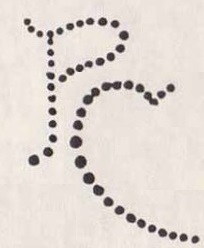Riverside Stamps

Return to Home Page
|
The contents of
this website is copyright protected. Any suggestions for additions or changes are always welcome. |
How accurate are government perforations?
This is the beginning of a study to see what is the tolerance of the perforations applied by the Bureau of Printing and Engraving (The Bureau) to the Washington / Franklin series of stamps.
The Expert’s Book, A Practical Guide to the Authentication of United States Stamps, by Paul Schmid (The Expert’s Book) describes the gauge 12 perforations as being 11.93 if one were using the Instanta gauge. Mr. Schmid also declares all throughout the book that “Measurements using the ‘Instanta’ gauge, the ‘Specialist’ gauge (12-66), and/or direct comparison with known genuine perforations must be precise” (emphasis added). Mr Schmid also states in How to Detect Damages, Altered, and Repaired Stamps on page 37 "A catalog listing of 10 perforations per two centimeters, for example, is ussually only an approximation, the actual number being somewhat greater or less.". It would seem the Mr Schmid is implying that there is a little wiggle room when measusuring perforations. In engineering zero tolerance is a physical impossibility that is gotten around by allowing for some deviation around a nominal value. This deviation is usually described as a “+/-” value after the nominal value. For example a measurement of 6mm +/- 0.01mm would allow for measurements from 5.99mm to 6.01mm. The same can be said for the perforations applied to stamps by The Bureau. Gauge 12 perforations described by Mr. Schmid as 11.93 on the dot would better be described as 11.93 +/- 0.05 for example.
The auther came across another more plausable explination for the variations in perforation measurements when I became aquainted with the fact that stamp paper has a vertical grain and will shrink a bit in the horizontal direction as it dries. Take for example the #331 horizontal perforations average out to a gauge of 11.975 and the vertical perforations average out to a gauge of 11.930. The most likely reason the horizontal perforations gauge slightly higher is because of the paper shrinking in the horizontal direction. The same goes for the #425 perf 10 measurements with the horizontal perforations average out to a gauge of 9.987 and the vertical perforations average out to a gauge of 9.956.
This author has blocks of four of all of the sheet stamps that can be used to fake flat plate coils and are shown below along with the measurements taken from the twelve different perforation locations. The reference blocks are as follows:
- Scott #332, flat plate, double line watermarked, perf 12 all around.
- Scott #374, flat plate, single line watermarked, perf 12 all around.
- Scott #425, flat plate, single line watermarked, perf 10 all around.
A block of four can provide 12 distinct samples of perforations that can be measured on an Instanta gauge (Fig. 1) while a single stamp could provide up to four distinct samples.
Fig.1

Here are the measurements for the block of four of Scott #331 for The Bureau’s Double Line Watermark gauge 12 perforations that this author uses as a reference device. Samples were taken in the same sequence as Fig. 1.
Table #1 shows the results of the measurements on the 12 samples and Chart #1
shows the distribution around the ideal value of 11.93.
Table #1
| Sample # | Instanta Gauge Reading | Ideal Reading |
| 1 | 11.950 | 11.93 |
| 2 | 11.935 | |
| 3 | 11.975 | |
| 4 | 11.915 | |
| 5 | 11.930 | |
| 6 | 11.845 | |
| 7 | 11.955 | |
| 8 | 11.870 | |
| 9 | 11.990 | |
| 10 | 11.899 | |
| 11 | 11.925 | |
| 12 | 11.910 | |
| 11.925 | Average reading | |
| 11.845 | Minimum Reading | |
| 11.990 | Maximum Reading | |
| 0.060 | Plus from Ideal | |
| 0.085 | Minus from Ideal |
Chart #1
As can be seen from the table and chart there is variation in the measurements of the gauge 12 perforations sampled from the reference in Fig. 1. From this small sample it can be said that perforation gauge 12 on the Instanta gauge is 11.93 +0.060/-0.085.
Here are the measurements for the block of four of Scott #374 for The Bureau’s Single Line Watermark gauge 12 perforations that this author uses as a reference device. Samples were taken in the same sequence as Fig. 1.
Table #2 shows the results of the measurements on the 12 samples and Chart #2
shows the distribution around the ideal value of 11.93.
Table #2
| Sample # | Instanta Gauge Reading | Ideal Reading |
| 1 | 12.010 | 11.93 |
| 2 | 11.982 | |
| 3 | 11.930 | |
| 4 | 11.915 | |
| 5 | 11.952 | |
| 6 | 11.800 | |
| 7 | 11.951 | |
| 8 | 11.820 | |
| 9 | 12.034 | |
| 10 | 11.900 | |
| 11 | 11.950 | |
| 12 | 11.951 | |
| 11.933 | Average reading | |
| 11.800 | Minimum Reading | |
| 12.034 | Maximum Reading | |
| 0.104 | Plus from Ideal | |
| 0.130 | Minus from Ideal |
Chart #2
As can be seen from the table and chart there is variation in the measurements of the #374 gauge 12 perforations. From this small sample it can be said that perforation gauge 12 on the Instanta gauge is 11.93 +0.104/-0.130.
Here are the measurements for the block of four of Scott #425 for The Bureau’s gauge 10 perforations that this author uses as a reference device. Samples were taken in the same sequence as Fig. 1.
Table #3 shows the results of the measurements on the 12 samples and Chart #3 shows the distribution around the ideal value of 9.97. Note: each sample reading is linked to an image of that sample overlaid on an Instanta gauge.
Table #3
|
Sample # |
Instanta Gauge Rreading |
Ideal Reading |
|
1 |
9.97 |
|
|
2 |
||
|
3 |
||
|
4 |
||
|
5 |
||
|
6 |
||
|
7 |
||
|
8 |
||
|
9 |
||
|
10 |
||
|
11 |
||
|
12 |
||
|
9.971 |
Average reading |
|
|
9.900 |
Minimum Reading |
|
|
10.030 |
Maximum Reading |
|
|
0.060 |
Plus from Ideal |
|
|
0.070 |
Minus from Ideal |
Chart #3

As can be seen from the table and chart there is variation in the measurements of the gauge 10 perforations sampled from the reference in Fig. 2. From this small sample it can be said that perforation gauge 10 on the Instanta gauge is 9.97 +0.060/-0.070.
As always comments and suggestions are always welcome.
To Contact Riverside Stamps:
Email:
Mike Girard - Owner / Operator / Web Master:
g1rardmn1099@comcast.net
|
I am a member of the American Philatelic Society
|
I am a member of the United States Stamp Society  USSS #: 16733 Visit the United States Stamp Society Website at www.usstamps.org |
I am a member of the Perfins Club
|

